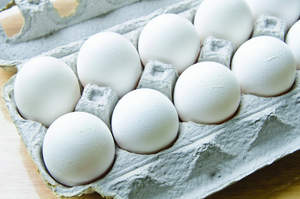MISSION, KS--(Marketwired - Mar 17, 2014) - (Family Features) Various terms are used on egg cartons or referenced in the news regarding how egg-laying hens are housed. But often, these expressions simply confuse shoppers and raise more questions than they answer about how eggs are produced.
Finding answers through research
To help consumers make sense of the confusion, the Coalition for Sustainable Egg Supply (CSES), a group of scientists, research institutions, food manufacturers, foodservice companies and egg producers, is researching and working to educate about the terms involved in raising hens in three distinct housing systems: conventional cages, "enriched" cages and cage-free.
Indoor hen housing systems were first introduced in the 1950s, bringing hens in from the outdoors, offering protection from weather, predators and disease, while improving sanitation.
"Our eggs used to be produced by smaller flocks that were outside. However, growers found that if we could move hens to cages inside a building we could better monitor and regulate their environment to keep them safe and comfortable," said Dr. Darrin Karcher, a professor at Michigan State University who is involved with the research.
While the research indicates pros and cons to each system, understanding the terms used will make you a more informed consumer, allowing you to choose what's best for your family.
Conventional cage systems
Approximately 95 percent of eggs are produced in what is known as a conventional cage system, where each cage houses six to nine hens. In general, this system has good indoor air quality, relatively few hen health issues and the costs of production are the lowest of the three systems, ensuring affordable eggs for consumers. Some disadvantages include hens not being able to perform behaviors such as dust bathing and foraging, as well as nesting and roosting. Caged hens also have poorer skeletal health due to lack of exercise.
Enriched cage systems
This type of hen housing provides more space for the hens than conventional, with perches, nesting areas and a flooring surface that facilitates foraging and dust-bathing behaviors. Hens are better able to express natural behaviors such as nesting and perching than in conventional cages, and perches improve bone strength. However, foraging behavior and dust bathing are not expressed as easily as in cage-free systems, while mortality and production costs are higher than conventional cages.
Cage-free systems
In this housing environment, hens roam through defined sectors of their barn, with open floor space and multiple levels so hens can exhibit natural behaviors. Hen mortality is the highest in this system, due in part to the number of hens in a section, which leads to competition and excessive pecking. The remaining flock is unable to produce as many eggs as flocks in other systems and labor costs are higher, so the cost of the eggs produced here is the highest of the three systems. Also, cage-free systems have increased levels of ammonia and dust due to litter and manure on the floor.
For more information about hen housing and sustainable egg production, visit www.sustainableeggcoalition.org.
About Family Features Editorial Syndicate
This and other food and lifestyle content can be found at www.editors.familyfeatures.com. Family Features is a leading provider of free food and lifestyle content for use in print and online publications. Register with no obligation to access a variety of formatted and unformatted features, accompanying photos, and automatically updating Web content solutions.
Contact Information:
Vickie Rocco
vrocco@familyfeatures.com
1-888-824-3337
http://editors.familyfeatures.com
